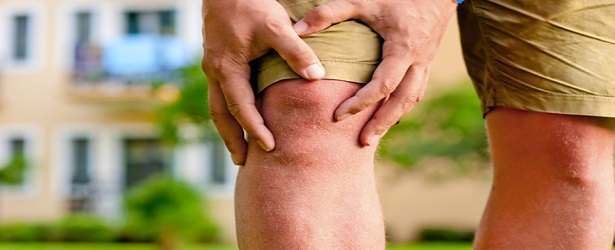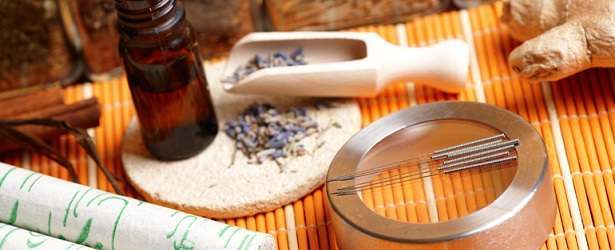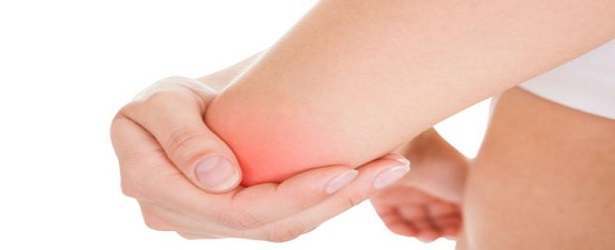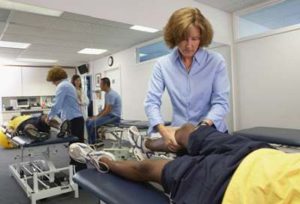Home Remedies for Joint Pain
Joint pain is not a simple physical condition to deal with. The symptoms of this condition can range from being uncomfortable to extremely painful and unbearable. If the cause is degenerative it changes patients’ lives considering that it is irreversible. Patients can only delay its progression, minimize the extent of the damage, and reduce its symptoms. Science is aware of many types of joint problems, and they affect men and women equally. Sadly, some kinds of this malady can affect children as well. While many medications and treatments are available to treat it, most of these solutions are quite expensive.
Symptoms of Joint Conditions
 Symptoms can range from irritating to painful to making daily tasks, such as walking and other things requiring movement, impossible to accomplish. The most common symptoms include joint inflammation followed by extreme pain, hardening or stiffness of the joints, and in worst cases difficulty in movement. Even seemingly unrelated conditions, like fatigue, irritability, or psychological stress, and even constipation, can be symptoms of joint problems, too. While there is no definite treatment to cure joint conditions as of yet, there are medications available that minimize the unbearable symptoms such as painful joints. The great thing is that some common home items or products, usually found in the kitchen, can be used to minimize the symptoms. Some medical experts question the validity and efficiency of these home products in minimizing such symptoms, but patients who have already tried them can testify in their favor.
Symptoms can range from irritating to painful to making daily tasks, such as walking and other things requiring movement, impossible to accomplish. The most common symptoms include joint inflammation followed by extreme pain, hardening or stiffness of the joints, and in worst cases difficulty in movement. Even seemingly unrelated conditions, like fatigue, irritability, or psychological stress, and even constipation, can be symptoms of joint problems, too. While there is no definite treatment to cure joint conditions as of yet, there are medications available that minimize the unbearable symptoms such as painful joints. The great thing is that some common home items or products, usually found in the kitchen, can be used to minimize the symptoms. Some medical experts question the validity and efficiency of these home products in minimizing such symptoms, but patients who have already tried them can testify in their favor.
Home Remedies
Some of the few home remedies that help in reducing the stress of joint conditions, appear below:
- To reduce or eliminate joint inflammation as well as pain, take two teaspoons of lemon juice or apple cider vinegar with two teaspoons of honey, mixed in a cup of warm water as a tonic drink once or twice a day.
- Rub warm vinegar into the painful joint area to soothe inflammation and relax the muscle groups in the surrounding areas.
- Drink a cup or two of alfalfa tea daily to delay the progression of joint pain.
- Drink a half teaspoon of turmeric power (dried yellow ginger) in warm water as a tonic to reduce the inflammation of joints and prevent infection. Turmeric has antioxidant properties.
- Drink at least two teaspoons daily of fresh juice of balboa leaf before eating to reduce the rate of progression of the disorder in just a month or two.
- Munch on a clove of garlic every other day to reduce the speed of joint pain progression and improve joint conditions.
- Eat two to three servings of walnuts or coconut before filling the stomach with any food to reduce the symptoms.
 These are just few of the many home remedies you can use to treat the symptoms of joint problems, particularly the pain.
These are just few of the many home remedies you can use to treat the symptoms of joint problems, particularly the pain.
Besides these quick and easy home ideas, you can soak affected parts in a warm Epsom bath while massaging and moderately moving the joints.
This can minimize the pain of inflammation as well as prevent the hardening of the joints.
A warm bath helps improve circulation, which in turn, can also help reduce the inflammation and swelling.
Healthy Diet and Exercise
By following a healthy diet and lifestyle you can greatly help to prevent or even to reduce the risk of developing joint issues. For example, eating foods rich in uric acid definitely causes joint problems since the uric acid is stored in the joint areas that cause the damage, making the problem develop faster. If the condition is already present, eating such food will only worsen the condition, and speed up the progression of the joint damages A healthy diet means eating more natural foods such as fruits and vegetables without compromising the other food groups. This way the body can seal in its necessary nourishment.

Do simple exercises to reduce the appearance of symptoms and prevent further damage. Such exercising doesn’t require going to the gym to join an aerobics class. Simple walking inside the house or around the neighborhood is enough, combined with stretching and mild cardio exercises. This also promotes weight loss. With excessive weight, “wear and tear” can occur. Keep an ideal weight to ensure healthier joints and bones.
Most people suffering from joint pain choose to go for natural or home remedies instead of using prescription drugs or medicines. These are less complicated and more economical. They are available in the comfort of a patient’s home anytime the patient needs them. Home remedies also do not have any side effects! Even history itself testifies how effective and easy home remedies are in offering convenient and quick solutions to any physical condition. Ancient civilizations have recorded the use of herbs, spices, and oils in treating maladies! There is no reason why you shouldn’t try them, too!
For patients more familiar with natural treatments, home remedies can greatly help. These patients should have no problems finding the right things in their kitchens to help them keep symptoms away.
But for patients just starting or considering the use of natural or home remedies, search alternative medicine books from the library, or in the bookstores, or even over the Internet. Seeking advise from a nutritionist can also help with natural treatments. Even with all this information, always consult with a medical professional or a doctor. Even with the right diagnosis, doctors are still the best people to talk to when it comes to finding solutions and treatments for joint problems.

 Subscribe Now
Subscribe Now

 Excessive weight brings so much stress to the joints that it soon causes damage, starting by blocking the normal blood flow to joints. This triggers, in kind, joint conditions and other medical complications. Joint problems can be defined in terms of inflammation, level of tenderness, and redness. All these symptoms appear based on the extent of damage to the joints.
Excessive weight brings so much stress to the joints that it soon causes damage, starting by blocking the normal blood flow to joints. This triggers, in kind, joint conditions and other medical complications. Joint problems can be defined in terms of inflammation, level of tenderness, and redness. All these symptoms appear based on the extent of damage to the joints. Several studies prove that obesity increases the risk of developing joint issues compared to those who have normal weight and a healthy body. In line with this fact, records show that knee and hip replacement procedures, administered to patients, have increased because of the global obesity epidemic.
Several studies prove that obesity increases the risk of developing joint issues compared to those who have normal weight and a healthy body. In line with this fact, records show that knee and hip replacement procedures, administered to patients, have increased because of the global obesity epidemic.

 Science has identified many
Science has identified many  Other seafood like lobsters and shrimps rich in glucosamine reduces joint pain. You can also get Glucosamine through health supplements. This is usually advised by most health experts since the food group that is rich in Glucosamine can be quite expensive.
Other seafood like lobsters and shrimps rich in glucosamine reduces joint pain. You can also get Glucosamine through health supplements. This is usually advised by most health experts since the food group that is rich in Glucosamine can be quite expensive.

 Currently, there are various treatment methods that lessen the gravity of this condition, but you still need to become familiar with the effects of these treatments so your can target specific symptoms. Some patients prefer to take traditional
Currently, there are various treatment methods that lessen the gravity of this condition, but you still need to become familiar with the effects of these treatments so your can target specific symptoms. Some patients prefer to take traditional  Other natural remedies used to relieve joint pain are apple cider vinegar, turmeric, ginger, honey, and cinnamon. Apple cider vinegar can be taken either orally, as a rubbing medium, or as a compress. The other four natural remedies were also proven to be very good at alleviating the pain that patients experienced.
Other natural remedies used to relieve joint pain are apple cider vinegar, turmeric, ginger, honey, and cinnamon. Apple cider vinegar can be taken either orally, as a rubbing medium, or as a compress. The other four natural remedies were also proven to be very good at alleviating the pain that patients experienced.
 It is very important to properly diagnose the main reason for
It is very important to properly diagnose the main reason for  Degeneration gradually damages the cartilage and causes connecting bones to rub together. This produces unbearable pain to the patient and serious inflammation to the joints’ surrounding areas. The condition can even lead to complications such as infection if left untreated.
Degeneration gradually damages the cartilage and causes connecting bones to rub together. This produces unbearable pain to the patient and serious inflammation to the joints’ surrounding areas. The condition can even lead to complications such as infection if left untreated.

 If any of the above symptoms appear at any given time, consult a doctor or a specialist immediately in order to determine if these
If any of the above symptoms appear at any given time, consult a doctor or a specialist immediately in order to determine if these  The doctor usually asks the patient about the symptoms. During this time the patient does most of the talking, while the doctor lists the things that may be relevant to some possible health conditions. The doctor may ask about the patient’s family medical history followed by physical exams, diagnostic procedures, such as blood tests, stress tests, x-rays, Magnetic Resonance Imaging, and joint aspiration in some cases. If the joint pain appears in the morning or during the daytime, it could be a form of joint problem which is an autoimmune ailment where the immune system attacks the well and healthy cells of the joints and its surrounding area. On the other hand, some types of joint conditions are degenerative and gradually damage the cartilage to an irreparable condition.
The doctor usually asks the patient about the symptoms. During this time the patient does most of the talking, while the doctor lists the things that may be relevant to some possible health conditions. The doctor may ask about the patient’s family medical history followed by physical exams, diagnostic procedures, such as blood tests, stress tests, x-rays, Magnetic Resonance Imaging, and joint aspiration in some cases. If the joint pain appears in the morning or during the daytime, it could be a form of joint problem which is an autoimmune ailment where the immune system attacks the well and healthy cells of the joints and its surrounding area. On the other hand, some types of joint conditions are degenerative and gradually damage the cartilage to an irreparable condition.
 As noted, generally the symptoms of both types develop undetected, causing medical technologists and medical practitioners to overlook the symptoms and misdiagnose the patient. As a result, these conditions are often diagnosed in later stages where prevention and management of the symptoms becomes difficult. Patients’ quality of life often suffers as a consequence, and they experience severe pain, immobility, and, for some, psychological degradation.
As noted, generally the symptoms of both types develop undetected, causing medical technologists and medical practitioners to overlook the symptoms and misdiagnose the patient. As a result, these conditions are often diagnosed in later stages where prevention and management of the symptoms becomes difficult. Patients’ quality of life often suffers as a consequence, and they experience severe pain, immobility, and, for some, psychological degradation.

 Many people self-diagnose joint conditions if they are feeling some pain in the joint area. Some people may decide to move to a place with a warmer climate in order to minimize the pain brought by this malady. Do these ideas really help? Do they have a scientific basis? These are just a few of the most common things people hear as a suggestion when it comes to
Many people self-diagnose joint conditions if they are feeling some pain in the joint area. Some people may decide to move to a place with a warmer climate in order to minimize the pain brought by this malady. Do these ideas really help? Do they have a scientific basis? These are just a few of the most common things people hear as a suggestion when it comes to  Most people think that moving a lot or doing some exercise worsens the joint pain caused by joint conditions; this is not true. In fact exercises can help repair or rehabilitate the joint’s elasticity and overall condition since it can prevent hardening or stiffening of the joints.
Most people think that moving a lot or doing some exercise worsens the joint pain caused by joint conditions; this is not true. In fact exercises can help repair or rehabilitate the joint’s elasticity and overall condition since it can prevent hardening or stiffening of the joints. One thing is for sure, following a healthy lifestyle definitely reduces the risk of developing joint complications and minimizes the
One thing is for sure, following a healthy lifestyle definitely reduces the risk of developing joint complications and minimizes the 



 In some cases, patients may need some physical therapy before they can engage in normal physical activities. Patients who have undergone such therapies attest that they have noticed improvements in their condition, particularly in their motion capacity. This is especially true for those suffering from degenerative joint problems. Patients also noted that pains also subsided after they have implemented some tips and suggestions from self-help write-ups. Further research noted that water exercises helped people suffering from inflammation, particularly the elderly ages 60 and up, where the pain was reduced and improved their motion.
In some cases, patients may need some physical therapy before they can engage in normal physical activities. Patients who have undergone such therapies attest that they have noticed improvements in their condition, particularly in their motion capacity. This is especially true for those suffering from degenerative joint problems. Patients also noted that pains also subsided after they have implemented some tips and suggestions from self-help write-ups. Further research noted that water exercises helped people suffering from inflammation, particularly the elderly ages 60 and up, where the pain was reduced and improved their motion. Patients suffering from
Patients suffering from